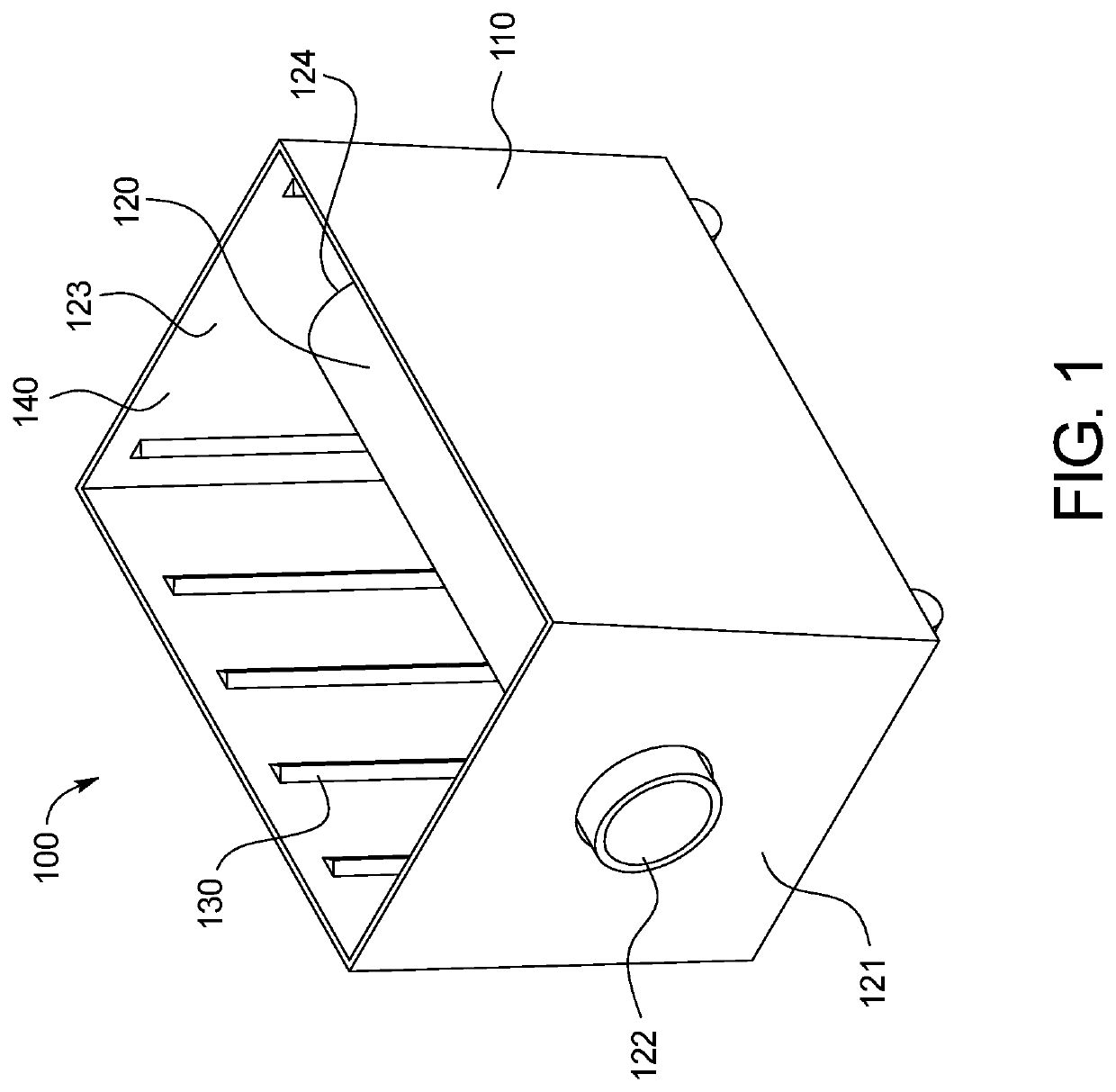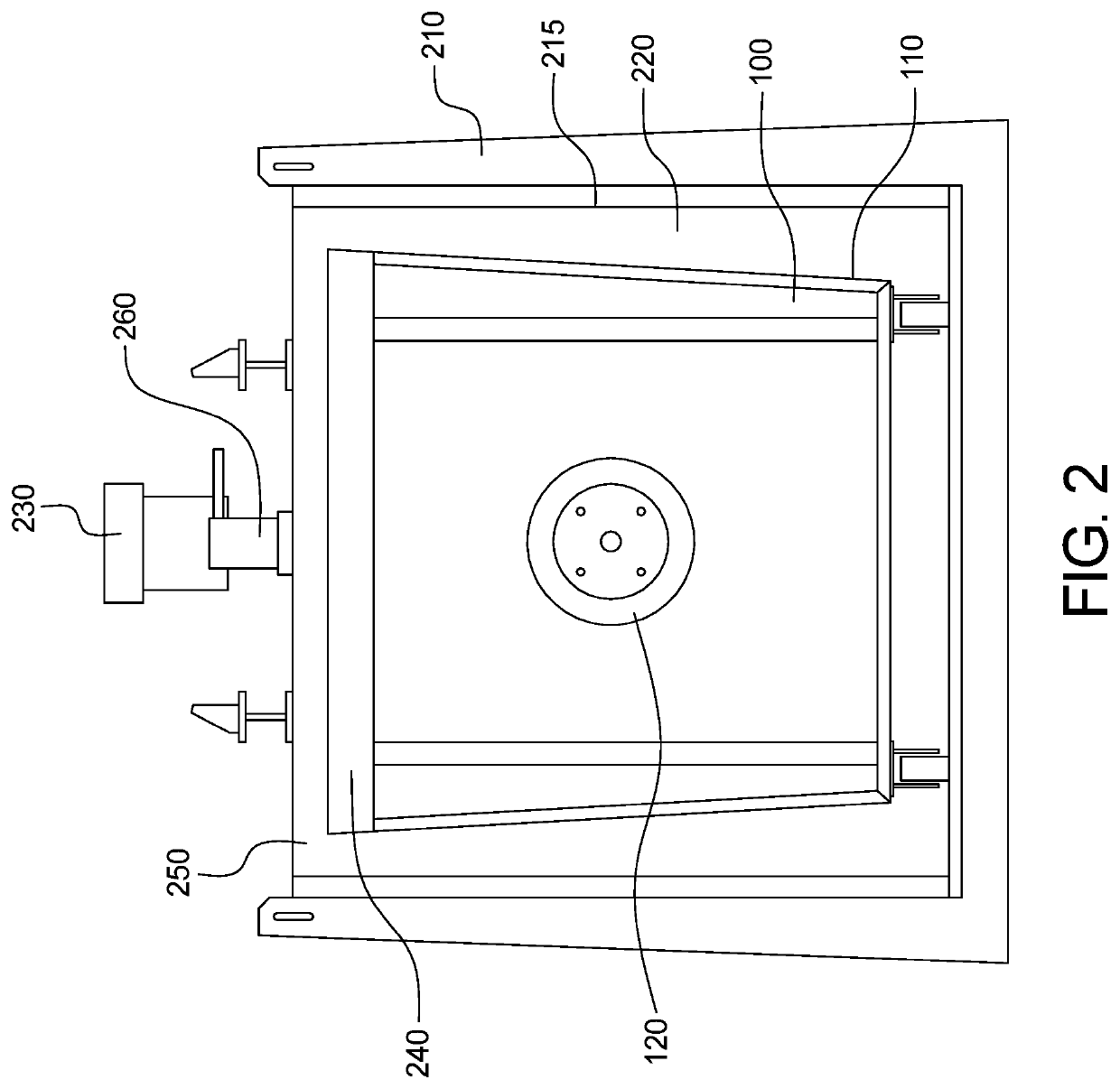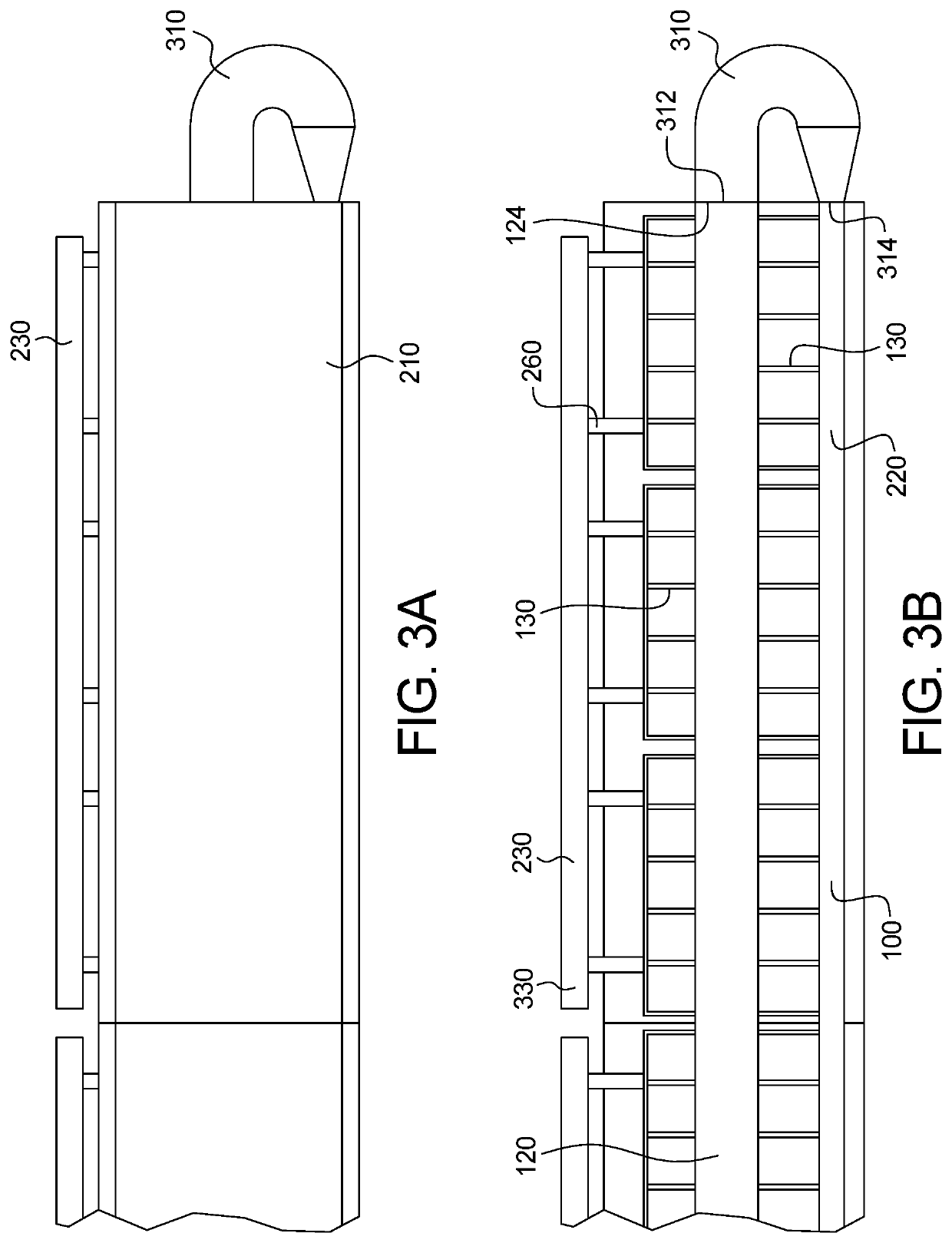Device and method for decontaminating soil
a technology of decontamination device and soil, which is applied in the direction of lighting and heating apparatus, transportation and packaging, combustion types, etc., can solve the problems of contaminated materials posing environmental risks, and the remediation system to clean contaminated materials rely on inefficient processes. , to achieve the effect of avoiding secondary use of gas, dissipating heat, and avoiding contaminated materials
- Summary
- Abstract
- Description
- Claims
- Application Information
AI Technical Summary
Benefits of technology
Problems solved by technology
Method used
Image
Examples
Embodiment Construction
[0018]This disclosure relates to technologies to indirectly heat a material. In some embodiments, the material comprises at least one contaminant. A non-exhaustive list of contaminants that are commonly found in contaminated materials include hydrocarbons, agricultural waste, fertilizers, pesticides, chlorinated solvents, or other manufactured gas plant waste. Some embodiments are further directed to thermally induce physical separation of a contaminant within a contaminated material through desorption induced by dual indirect heating. In some embodiments, an exhaust header recaptures contaminant released as offgas from the material by condensing the offgas in the exhaust header.
[0019]One embodiment of the present disclosure is a thermal desorption device. In some embodiments, a bin housing insulator encloses or encapsulates bins filled with contaminated material. The bin housing insulator further comprises a gas delivery port to provide a flow of heated gas through the desorption d...
PUM
 Login to View More
Login to View More Abstract
Description
Claims
Application Information
 Login to View More
Login to View More - R&D
- Intellectual Property
- Life Sciences
- Materials
- Tech Scout
- Unparalleled Data Quality
- Higher Quality Content
- 60% Fewer Hallucinations
Browse by: Latest US Patents, China's latest patents, Technical Efficacy Thesaurus, Application Domain, Technology Topic, Popular Technical Reports.
© 2025 PatSnap. All rights reserved.Legal|Privacy policy|Modern Slavery Act Transparency Statement|Sitemap|About US| Contact US: help@patsnap.com



